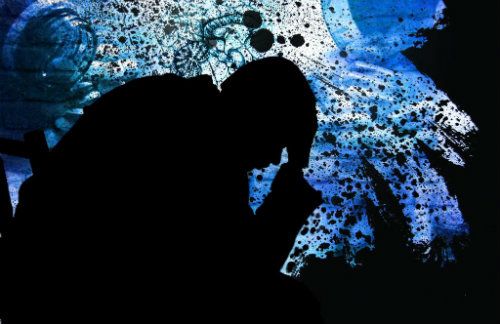This diary is basically a republishing of a paper I wrote awhile back. The original paper — written when I was 20 taking a graduate class in my undergraduate program — was over twice the length of what you’ll find below the fold. I trimmed it down and reused it for a paper at my current university, and that’s what you see here.
 I am sharing this diary about pediatric bipolar disorder (which is not listed separately from BD in the DSM) because I think most educated people have at least a rudimentary idea of what bipolar disorder is. Pediatric bipolar disorder is less talked about because it is less accepted and therefore more controversial. This makes sense for plenty of reasons. For one thing, the criteria being used to diagnose it are often different or fewer than those formally listed in the DSM. Many people believe that bipolar disorder never fully manifests until late adolescence or early adulthood, and will not accept a “pediatric” form of the disorder as being valid. Further, it is very controversial because of the generally accepted notion that bipolar disorder requires pharmacological intervention, and the medications used to treat it can cause a plethora of adverse cognitive and physiological side effects. The idea of giving these medications to children in their formative years is disturbing to many (including myself, due to intimate personal understanding of how dangerous these medications can be even for adults). Then, of course, there is the argument that bipolar disorder may be over-diagnosed, and that to label a child with such a debilitating, chronic illness is inappropriate.
I am sharing this diary about pediatric bipolar disorder (which is not listed separately from BD in the DSM) because I think most educated people have at least a rudimentary idea of what bipolar disorder is. Pediatric bipolar disorder is less talked about because it is less accepted and therefore more controversial. This makes sense for plenty of reasons. For one thing, the criteria being used to diagnose it are often different or fewer than those formally listed in the DSM. Many people believe that bipolar disorder never fully manifests until late adolescence or early adulthood, and will not accept a “pediatric” form of the disorder as being valid. Further, it is very controversial because of the generally accepted notion that bipolar disorder requires pharmacological intervention, and the medications used to treat it can cause a plethora of adverse cognitive and physiological side effects. The idea of giving these medications to children in their formative years is disturbing to many (including myself, due to intimate personal understanding of how dangerous these medications can be even for adults). Then, of course, there is the argument that bipolar disorder may be over-diagnosed, and that to label a child with such a debilitating, chronic illness is inappropriate.
I have my misgivings about the way bipolar disorder is diagnosed in children, but after years of off-and-on study of the topic, I have come to the conclusion that the early manifestation of the disorder is, though rare, a reality. I also have doubts about the degree of “rapid cycling” described by some authors in the field. Still, it makes for intriguing reading. If you have a few free minutes, follow me below the fold for a review of the current literature.



 I am sharing this diary about pediatric bipolar disorder (which is not listed separately from BD in the DSM) because I think most educated people have at least a rudimentary idea of what bipolar disorder is. Pediatric bipolar disorder is less talked about because it is less accepted and therefore more controversial. This makes sense for plenty of reasons. For one thing, the criteria being used to diagnose it are often different or fewer than those formally listed in the DSM. Many people believe that bipolar disorder never fully manifests until late adolescence or early adulthood, and will not accept a “pediatric” form of the disorder as being valid. Further, it is very controversial because of the generally accepted notion that bipolar disorder requires pharmacological intervention, and the medications used to treat it can cause a plethora of adverse cognitive and physiological side effects. The idea of giving these medications to children in their formative years is disturbing to many (including myself, due to intimate personal understanding of how dangerous these medications can be even for adults). Then, of course, there is the argument that bipolar disorder may be over-diagnosed, and that to label a child with such a debilitating, chronic illness is inappropriate.
I am sharing this diary about pediatric bipolar disorder (which is not listed separately from BD in the DSM) because I think most educated people have at least a rudimentary idea of what bipolar disorder is. Pediatric bipolar disorder is less talked about because it is less accepted and therefore more controversial. This makes sense for plenty of reasons. For one thing, the criteria being used to diagnose it are often different or fewer than those formally listed in the DSM. Many people believe that bipolar disorder never fully manifests until late adolescence or early adulthood, and will not accept a “pediatric” form of the disorder as being valid. Further, it is very controversial because of the generally accepted notion that bipolar disorder requires pharmacological intervention, and the medications used to treat it can cause a plethora of adverse cognitive and physiological side effects. The idea of giving these medications to children in their formative years is disturbing to many (including myself, due to intimate personal understanding of how dangerous these medications can be even for adults). Then, of course, there is the argument that bipolar disorder may be over-diagnosed, and that to label a child with such a debilitating, chronic illness is inappropriate.